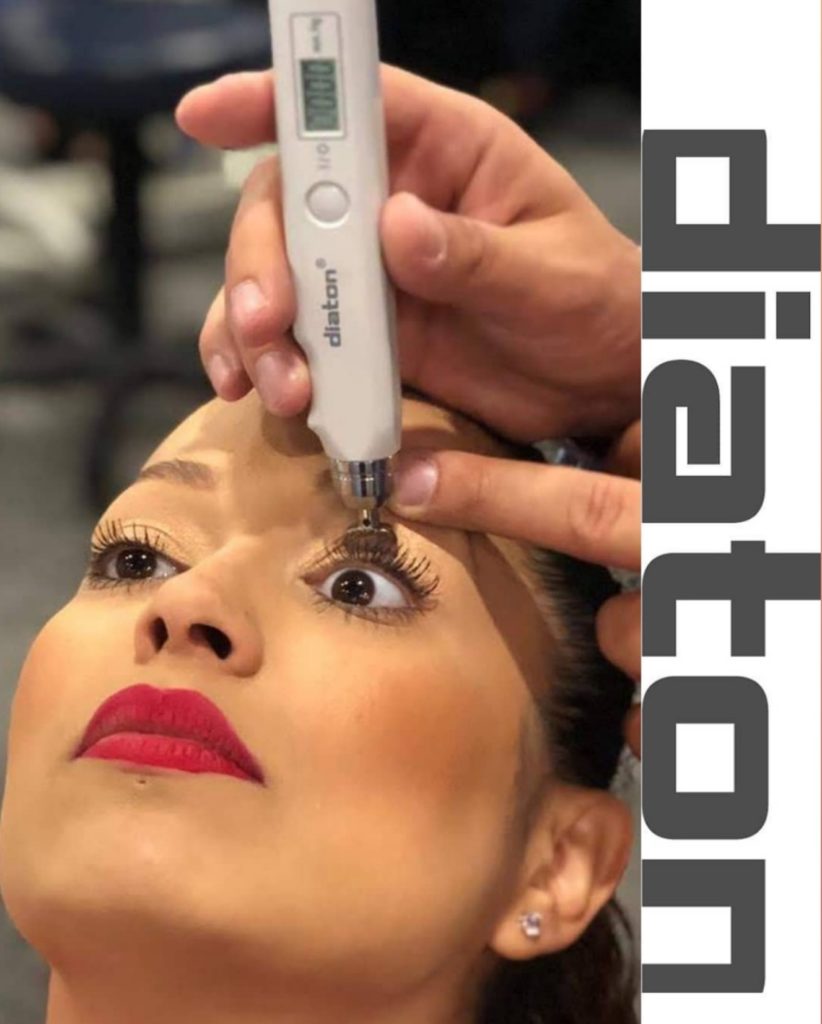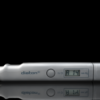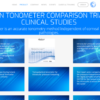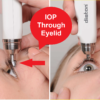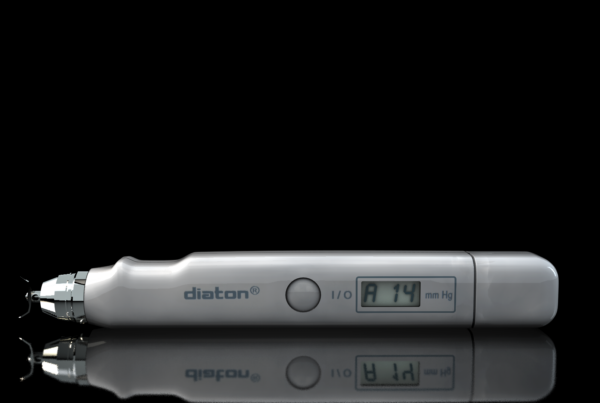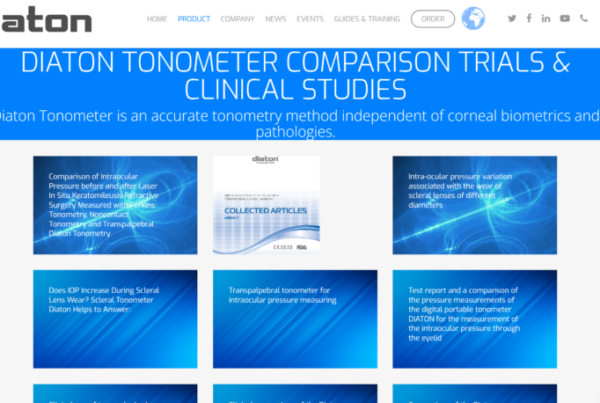Understanding Tonometry: Emphasizing the Diaton Tonometer – IOP THROUGH EYELID
Tonometry is a critical procedure in eye care, used primarily to measure the pressure inside the eye, known as intraocular pressure (IOP). This measurement is crucial for diagnosing and monitoring glaucoma, a condition that can lead to vision loss. The Diaton tonometer has emerged as a significant advancement in tonometry, offering unique benefits over traditional methods and allowing to measure IOP through the upper eyelid, overlaying the sclera, without touching the eye.
What is a Tonometer Used For?
A tonometer is used to measure IOP by assessing the resistance of the eye to pressure. Elevated IOP is a primary risk factor for glaucoma. Regular tonometry checks are vital in glaucoma management, helping to prevent the onset of symptoms and progression of the disease.
Does Tonometry Touch Your Eye?
Traditional tonometry methods often involve direct contact with the cornea. Techniques like the “Goldmann tonometry,” require numbing drops and a probe to gently touch the cornea. However, this is where the Diaton tonometer stands out.
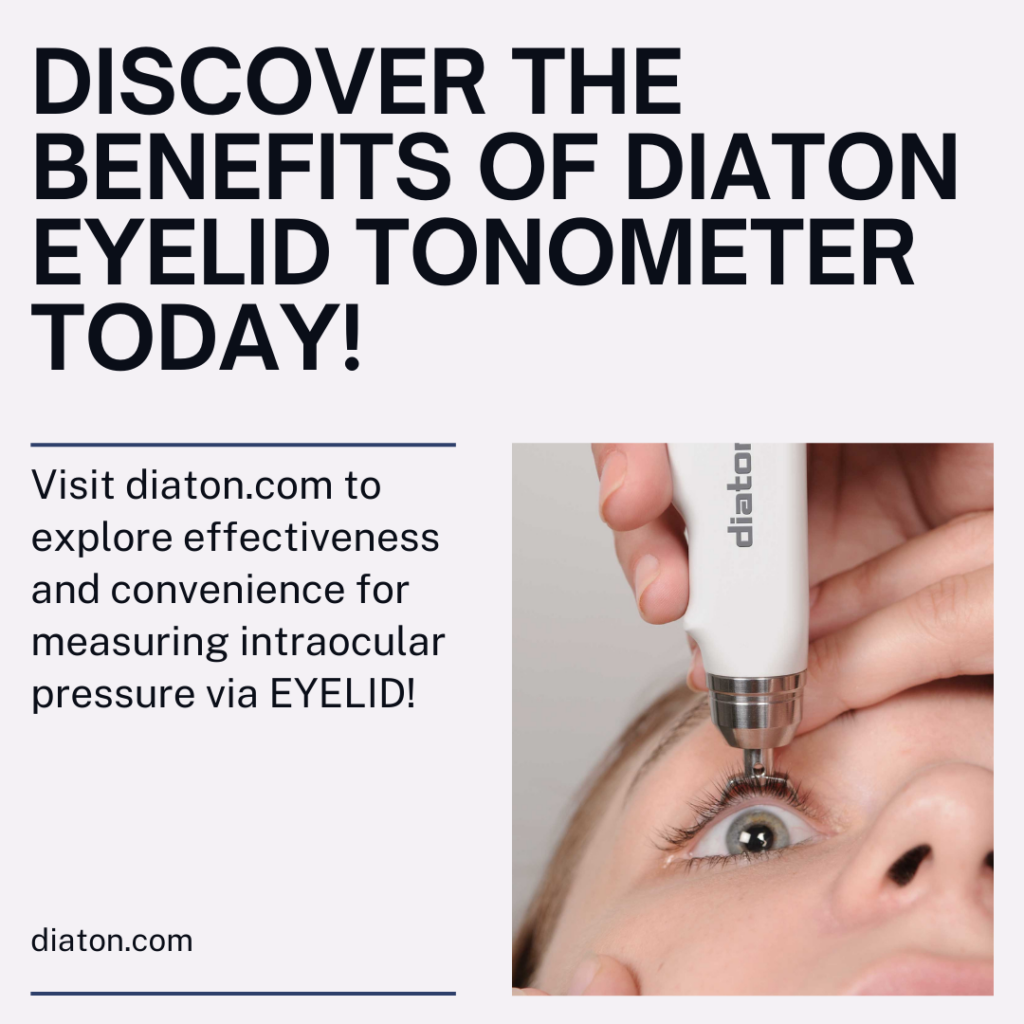
The Diaton Tonometer: A Non-Corneral Approach
The Diaton Tonometer offers several advantages over corneal tonometers in specific cases, particularly due to its unique method of measuring intraocular pressure (IOP) through the eyelid and over the sclera, bypassing the cornea. Here are some scenarios where the Diaton Tonometer is more advantageous:
- Variations in Central Corneal Thickness (CCT): Traditional corneal tonometers can be influenced by the thickness of the cornea, potentially leading to inaccurate IOP readings. The Diaton Tonometer, measuring IOP transpalpebrally (through the eyelid), is not affected by CCT, making it useful in patients with unusually thick or thin corneas.
- Corneal Rigidity: The rigidity or biomechanical properties of the cornea can affect IOP readings with corneal tonometers. Since the Diaton Tonometer bypasses the cornea, it eliminates this variability, providing more consistent readings irrespective of corneal rigidity.
- Keratoconus: This is a condition where the cornea becomes thin and cone-shaped, leading to distorted vision. Corneal tonometers may not provide accurate readings due to the altered corneal shape and thickness. The Diaton Tonometer is advantageous as it does not interact with the cornea.
- Post-LASIK or Other Corneal Surgeries: After procedures like LASIK, PRK, or other corneal surgeries, the cornea’s shape and thickness are altered, which can affect the accuracy of corneal tonometers. The Diaton Tonometer’s eyelid-based measurement avoids the cornea, making it suitable for post-surgical IOP assessments.
- Corneal Scars or Astigmatism: In cases where the cornea has scars or significant astigmatism, corneal tonometers might face challenges in obtaining accurate readings. The Diaton Tonometer is not influenced by these corneal abnormalities.
- Risk of Corneal Infection or Trauma: In patients where the risk of infection or trauma to the cornea is a concern (e.g., after a corneal transplant, or in cases of ocular surface disease), the non-contact nature of the Diaton Tonometer is a safer alternative.
- Use with Contact or Scleral Lenses: Patients wearing contact or scleral lenses can be tested with the Diaton Tonometer without the need to remove the lenses, unlike with many corneal tonometers.
- Patient Discomfort with Corneal Contact: Some patients are uncomfortable with the sensation or the idea of an instrument touching their eye. The Diaton Tonometer avoids this issue, being non-invasive and more patient-friendly.
In these scenarios, the Diaton Tonometer not only enhances patient comfort but also provides more reliable and accurate IOP measurements, making it a valuable tool in diverse clinical situations.
Is Tonometry Painful?
Traditional tonometry can cause mild discomfort due to the eye drops or the pressure of the probe on the cornea. However, the Diaton tonometer offers a pain-free experience. Since it doesn’t involve corneal contact or numbing drops, the procedure is more comfortable and less intimidating for patients.
How Much Does a Tonometer Cost?
The cost of tonometers varies widely based on the technology and brand. Standard tonometers can range from a few hundred to several thousand dollars. The Diaton tonometer, while potentially more costly upfront than some traditional models, offers long-term savings and benefits. Its non-invasive method reduces the need for consumables like numbing drops and sterilization equipment, and its durability and ease of use make it a cost-effective option for many practices.
To find out the price of Diaton tonometer visit: https://tonometerdiaton.com/order-information-diaton-tonometer-price/
Who uses the Diaton Tonometer?
The Diaton Tonometer is used by a diverse range of healthcare professionals and settings, primarily due to its non-invasive, versatile, and hygienic features. Here are some of the primary users of the Diaton Tonometer:
- Ophthalmologists and Optometrists: These eye care specialists use the Diaton Tonometer for routine eye exams and for monitoring patients with glaucoma or those at risk of developing it. Its non-invasive nature is particularly advantageous for patients who are uncomfortable with traditional corneal contact methods.
- General Practitioners and Family Doctors: In some cases, general healthcare providers may use the Diaton Tonometer for basic eye checks, without the need to touch the eye directly.
- Pediatricians: Children, often being less cooperative with instruments that touch the eye, benefit from the non-contact approach of the Diaton Tonometer. It is easier to use on pediatric patients, making eye pressure measurements less traumatic.
- Emergency Medicine Personnel: In emergency settings, where quick and non-invasive assessments are crucial, the Diaton Tonometer can be used to check for signs of increased IOP, which might indicate ocular injuries or conditions needing urgent care.
- Nursing Homes and Long-term Care Facilities: For elderly patients or those with mobility issues, the Diaton Tonometer’s ability to measure IOP without requiring the patient to be in a specific position (sitting or lying down) is particularly beneficial.
- Mobile Clinics and Health Missions: The portability and ease of use of the Diaton Tonometer make it ideal for use in mobile clinics and health missions, especially in remote or underserved areas.
- Research Institutions: Researchers studying ocular health and diseases like glaucoma find the Diaton Tonometer useful due to its unique measurement approach, providing an alternative perspective in clinical studies.
- Correctional Facilities: In environments like jails or prisons, the hygienic aspect of the Diaton Tonometer (no direct contact with the eye) is crucial for reducing the risk of cross-contamination.
- Specialty Clinics: Clinics that focus on specific populations, such as those with disabilities or special needs, often use the Diaton Tonometer for its patient-friendly approach.
In summary, the Diaton Tonometer’s unique features make it a valuable tool across various medical and clinical settings, appealing to a wide range of healthcare providers who require efficient, safe, and patient-friendly methods for measuring intraocular pressure.
The Diaton Difference
Benefits Over Traditional Methods
- Non-Invasive: Measures IOP through the eyelid, avoiding direct contact with the cornea.
- No Numbing Drops Required: Enhances patient comfort and eliminates the risk of allergic reactions to the drops.
- Versatile: Suitable for patients with corneal abnormalities, contact lenses, or those who have undergone corneal surgeries.
- Hygienic: Reduces the risk of cross-contamination, making it ideal for mass screenings and diverse clinical settings.
- Ease of Use: Can be operated in various positions, accommodating different patient needs and clinical scenarios.
In conclusion, the Diaton tonometer represents a significant advancement in the field of tonometry. Its unique approach to measuring IOP offers numerous benefits, making it a preferred choice for both patients and eye care professionals. As technology in eye care continues to evolve, the Diaton tonometer sets a new standard in safe, effective, and patient-friendly IOP measurement.
To learn more about Diaton Tonometer visit: https://TonometerDiaton.com/

